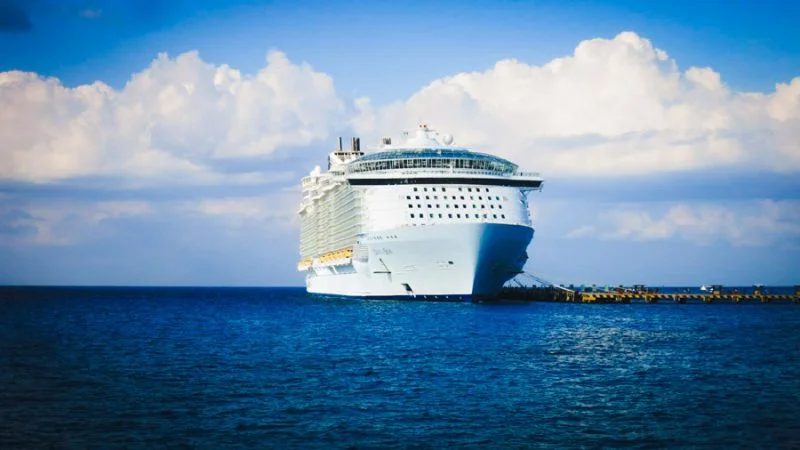You’ve probably seen the headlines. "Norovirus Outbreak on Luxury Cruise." It’s a familiar story, one that conjures unpleasant images and confirms a certain cynical view of travel in our modern, hyper-connected world. When I saw the news about the Royal Caribbean’s Serenade of the Seas, with 98 people falling ill on their voyage from San Diego to Miami, my first thought wasn't about the sickness. It was about the signal.
Because what’s happening on that ship isn't the story you think it is. It’s not a story about failure. It’s a story about one of the most sophisticated, real-time public health systems on the planet firing on all cylinders. And you and I, we are getting a front-row seat to the future of how we keep ourselves safe.
Imagine the scene. You’re on the Serenade of the Seas. Thirteen days of open ocean, the rhythmic hum of the engines a constant companion, the sun glinting off the endless blue expanse. You’re in a floating city, a marvel of engineering and logistics. Then, the disruption. A passenger reports to the medical bay. Then another. The symptoms are unmistakable: the violent, sudden onset of vomiting and diarrhea. The invisible enemy, norovirus, is on board.
In an earlier era, this would be the start of a slow-burn disaster. Panic, rumor, and a creeping, unstoppable wave of illness. But that’s not what happened. Instead, something incredible and almost invisible was activated. A system.
From Floating Petri Dish to Public Health Blueprint
The Ship’s Immune System
When the ship's crew reported the outbreak to the CDC’s Vessel Sanitation Program on Sunday, September 28th, they weren’t just filing a report. They were tripping a wire, activating a highly refined, data-driven response protocol. This isn't just a set of cleaning instructions—in simpler terms, it's a dynamic, adaptive strategy for isolating and neutralizing a biological threat in a closed environment.
Think about it. Within hours, the crew initiates heightened sanitation procedures. Stool specimens are collected not just for confirmation, but for immediate analysis. Ill passengers and crew—94 guests and 4 crew members—are isolated. This isn’t a clumsy quarantine; it’s a precise, surgical intervention designed to sever the chains of transmission at their weakest points. The ship itself becomes a smart-response zone.

When I first read the CDC report, detailing the speed and precision of the response, I honestly just sat back in my chair, a little stunned. This is it. This is the kind of quiet, competent, technological triumph that reminds me why I got into this field in the first place. We see the 98 cases and think "problem." I see the other 2,659 people on board who are being protected by this invisible shield and think "breakthrough."
The CDC notes that norovirus can spread rapidly in "semienclosed environments," and they're right. But that’s precisely what makes a cruise ship the perfect laboratory for developing these next-generation public health tools. It’s a microcosm of a city, with shared dining, entertainment, and living quarters. The fact that there have been 19 gastrointestinal outbreaks on ships this year, 14 of them norovirus, isn't a sign of systemic failure. It’s a sign that the system is being tested, hardened, and perfected nineteen times over. Each outbreak provides another flood of data, another chance to refine the algorithm of response.
This is a paradigm shift in how we handle public health, a leap as significant as the one from miasma theory to germ theory. For centuries, our primary tool against outbreaks was the blunt instrument of quarantine—walling off a city, forcing a ship to wait in the harbor for 40 days, hoping the pestilence would burn itself out. It was a strategy based on fear and ignorance. What we’re seeing now is a strategy based on data and speed. The speed of this is just staggering—it means the gap between an outbreak's first spark and its containment is closing faster than we could have ever imagined just a few decades ago.
Of course, this power brings with it a profound responsibility. As we get better at tracking and tracing these events, we have to be vigilant about the line between public safety and personal privacy. The data we collect to stop a virus must be used with the utmost care and transparency. That is the ethical tightrope we must walk.
But what could this mean for us, for our future? Imagine this same model, this rapid-response protocol, applied not just to a ship, but to a city block. To an airport terminal. To a school. A world where the first sign of an outbreak triggers an immediate, data-informed, and targeted response that snuffs it out before it can become an epidemic. A world where public health isn't reactive, but predictive.
I was browsing a forum online, and one user cut through all the noise with a comment that perfectly captured the essence of this. They wrote, "It's like the ship's own immune system kicked in." That’s exactly it. We are building a collective, technological immune system for our communities. The Serenade of the Seas isn't a floating petri dish. It’s a blueprint.
The Invisible Shield, Made Visible ###
Forget the scary headlines. The real story isn’t that a few dozen people got sick. The real story is that a complex, data-driven system, honed by decades of research and real-world application, instantly activated to protect thousands. We are witnessing the birth of a new public health infrastructure, one that is smart, swift, and scalable. This isn't just about safer cruises; it's about building a safer world.
Reference article source:
